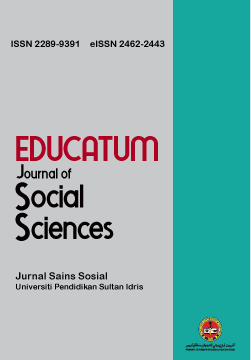Proficiency and Approaches in Teaching Children with Learning Disabilities among Filipino Teachers
DOI:
https://doi.org/10.37134/ejoss.vol8.1.11.2022Keywords:
approaches, proficiency, inclusive education, learning disabilities, special educationAbstract
The main purpose of the study is to determine the approaches and proficiency of teachers in teaching children with learning disabilities in public elementary schools in San Mateo North and South District, Division of Isabela for the School Year 2019-2020. Descriptive survey was employed. The school heads and SpEd teachers were served as respondents. Mean, t-test and Spearman rank were used to analyze data. The results showed that the teachers teaching students with learning disabilities are proficient and often used different approaches. The teachers are knowledgeable about the applicable teaching approaches to be employed in teaching students with learning disabilities. Likewise, as to the extent of employing of approaches, these were evident as practiced by the teachers and as confirmed and observed by the school heads. School Heads and teachers have the same level of assessment in terms of the extent of approaches in teaching students with disabilities. The teachers are proficient in handling students with learning difficulties. In terms of teachers’ proficiency, both teachers and school heads assessed the teachers as proficient. Therefore, they have the same level of assessment. Teachers frequently used the approaches as manifested by their level of proficiency except for content knowledge. Thus, proficiency of teacher in content knowledge do not depend on approaches being used. The teachers and school administrators shall attend trainings, workshops and conferences related to the varied teaching approaches applicable to the students with learning disabilities. The administrators and focal person of SPED in the district shall engage more related activities and trainings about the nature of content knowledge to be included in the curriculum of the special education to update the content and competencies.
Downloads
References
Alquraini, T., (2010). Special Education in Saudi Arabia: Challenges, Perspectives, Future Possibilities. International Journal of Special Education, 25(3), pp. 139-14
Alvarado, A. E., & Lopez, Jr., M. R. (2020). Implementation of Omnibus Policy on kindergarten education. Asian Journal of Assessment in Teaching and Learning, 10(2), 34-54. https://doi.org/10.37134/ajatel.vol10.2.5.2020
American Psychiatric Association. (2013). Diagnostic and statistical manual of mental disorders (5th ed.). Washington, DC: Author.
Bender, W., Vail, O., & Scott, K. (2015). Teachers’ attitudes toward increased mainstreaming: Implementing effective instruction for students with learning disabilities. Journal of Learning Disabilities, 28 (2),87-94.
Bullocks, K. L. (2015). The Nature of the Students with Learning Disabilities in the Basic Education. Journal of Learning Disabilities. 25 (2). 93-101.
Chiang, W. S. (2021). Involvement of External Stakeholders in Designing Pedagogy for Experiential Learning at University Level: A Case Study. EDUCATUM Journal of Social Sciences, 7(2), 45-56. https://doi.org/10.37134/ejoss.vol7.2.5.2021
Connolly, M., Patterson, J., & Ritter, S. (2015). Restructuring the inclusion classroom to facilitate differentiated instruction. Middle School Journal. 41(1), 46-52.
Connolly, M., Patterson, J., & Ritter, S. (2012). Restructuring the inclusion classroom to facilitate differentiated instruction. Middle School Journal. 41(1), 46-52.
Dawson, H., & Scott, L. (2016). Teaching students with disabilities efficacy scale: Development and validation. Inclusion, 1(3), 181-196.
Fathurohman, I., & Cahyaningsih, R. D. (2021). Development of Authentic Assessment Instrument for Improving Extensive Capacity of Metacognitive Perspective. Asian Journal of Assessment in Teaching and Learning,11(1), 3-21. https://doi.org/10.37134/ajatel.vol11.1.2.2021
Gilhool, T. K. (2019). The right to an effective education: From Brown to P.L. 94-142 and beyond. In D. Lipsky & A. Gartner (Eds.), Beyond separate education: Quality education for all (pp. 243-253). Baltimore: Paul H. Brookes.
Glavin P. (2012). Behavioral Strategies for Classroom Management. Columbus, Ohio: Charles E. Merrill Publishing Company. Bell and Howell Company.
Gonzales, N. A. P. (2020). 21st Century Skills in Higher Education: Teaching and Learning at Ifugao State University, Philippines Asian Journal of Assessment in Teaching and Learning, 10(2), 72-81. https://doi.org/10.37134/ajatel.vol10.2.8.2020
Lee, V. E. (2015). Restructuring LWDs for Equity and Excellence: What Works? Who does? Harvard Educational Review, 71(4), 766-67.
Mulvany, J. (2015). Disability, impairment or illness? The relevance of the social model of disability to the study of mental disorder. Sociology of Health and Illness, 22(5), 582-601. Retrieved from Academic Research Library database.
Terzi, L. (2014). The social model of disability: A philosophical critique. Journal of Applied Philosophy, 21(2), 7-9. Retrieved from Academic Research Library database





